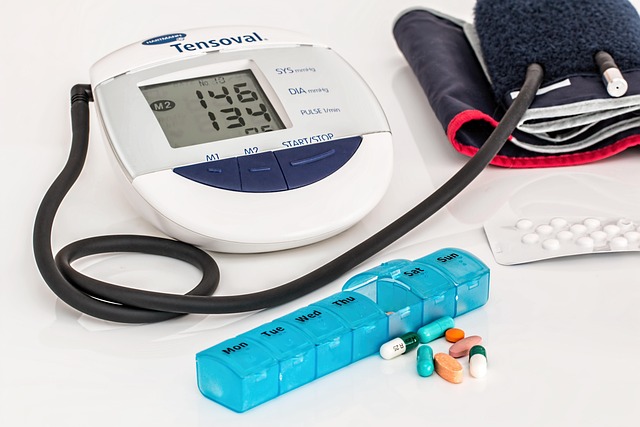Understanding Crohn's Disease Symptoms and Impact
Crohn's disease is a chronic inflammatory bowel disease that affects millions of people worldwide, causing inflammation in various parts of the digestive tract. This complex condition can significantly impact daily life through a range of symptoms that vary from person to person. Understanding these symptoms, their causes, and how they manifest is crucial for early recognition and proper management of this lifelong condition.

Understanding Crohn’s Disease: Symptoms & Causes
Crohn’s disease develops when the immune system mistakenly attacks healthy tissue in the digestive tract, leading to chronic inflammation. The exact cause remains unknown, but researchers believe it results from a combination of genetic factors, environmental triggers, and immune system dysfunction. Common symptoms include persistent diarrhea, abdominal pain and cramping, blood in stool, reduced appetite, and unintended weight loss. Fatigue and fever often accompany these digestive symptoms, making daily activities challenging for many patients.
The inflammation associated with Crohn’s disease can occur anywhere from the mouth to the anus, though it most commonly affects the end of the small intestine and the beginning of the colon. This patchy distribution of inflammation is characteristic of Crohn’s disease and distinguishes it from other inflammatory bowel conditions. Symptoms typically develop gradually over time, though some people experience sudden onset of severe symptoms.
How Crohn’s Disease Affects Your Digestive System
The digestive system bears the primary impact of Crohn’s disease, with inflammation creating a cascade of complications throughout the gastrointestinal tract. When inflammation occurs in the small intestine, it can interfere with nutrient absorption, leading to deficiencies in vitamins and minerals. This malabsorption often results in symptoms like weakness, bone pain, and delayed healing.
The chronic inflammation can cause the intestinal wall to thicken and form scar tissue, potentially leading to strictures or narrowing of the bowel. These strictures can cause severe cramping, bloating, and in some cases, complete bowel obstruction requiring emergency medical attention. Additionally, deep inflammation may create fistulas, which are abnormal connections between different parts of the intestine or between the intestine and other organs.
Unique Crohn’s Symptoms & Considerations for Females
Women with Crohn’s disease may experience symptoms that are specifically related to their reproductive health and menstrual cycle. Many women report that their Crohn’s symptoms worsen during menstruation, with increased abdominal pain, diarrhea, and bloating coinciding with their monthly cycle. This relationship appears to be linked to hormonal fluctuations, particularly changes in estrogen and progesterone levels.
Pregnancy presents unique considerations for women with Crohn’s disease. While many women can have successful pregnancies, the condition may affect fertility and requires careful monitoring throughout pregnancy. Some women find their symptoms improve during pregnancy, while others may experience flare-ups. Iron deficiency anemia is also more common in women with Crohn’s disease due to chronic blood loss and poor iron absorption, which can be exacerbated by menstrual bleeding.
What to Expect During Active Crohn’s Disease Flares
Active Crohn’s disease flares are periods when symptoms significantly worsen, often requiring medical intervention and lifestyle adjustments. During these episodes, patients typically experience intense abdominal cramping, frequent loose or bloody stools, and severe fatigue that can be debilitating. The pain is often described as sharp or knife-like and may be accompanied by nausea and vomiting.
Flare-ups can last anywhere from a few days to several months, and their frequency varies greatly among individuals. Some people may go years between flares, while others experience more frequent episodes. Stress, certain foods, infections, and medication changes can trigger flares, though sometimes they occur without any identifiable cause. During active periods, many patients require prescription medications, dietary modifications, and sometimes hospitalization for severe cases.
Visualizing Crohn’s: Insights from Disease Pictures
Medical imaging and endoscopic procedures provide valuable visual insights into how Crohn’s disease affects the digestive tract. Colonoscopy images often reveal characteristic features such as cobblestone-like mucosal patterns, deep ulcerations, and skip lesions where inflamed areas alternate with healthy tissue. These visual findings help gastroenterologists diagnose the condition and monitor disease progression over time.
CT scans and MRI imaging can show thickening of the bowel wall, strictures, and complications like abscesses or fistulas. These imaging studies are particularly useful for evaluating areas of the small intestine that cannot be reached during colonoscopy. The visual evidence from these procedures helps physicians determine the extent and severity of inflammation, guiding treatment decisions and monitoring response to therapy.
Crohn’s disease presents a complex array of symptoms that can significantly impact quality of life, but understanding these manifestations is the first step toward effective management. While the condition is chronic and currently has no cure, many people with Crohn’s disease lead fulfilling lives with proper medical care, dietary management, and lifestyle modifications. Early recognition of symptoms and prompt medical attention can help prevent complications and improve long-term outcomes for those living with this challenging condition.
This article is for informational purposes only and should not be considered medical advice. Please consult a qualified healthcare professional for personalized guidance and treatment.




